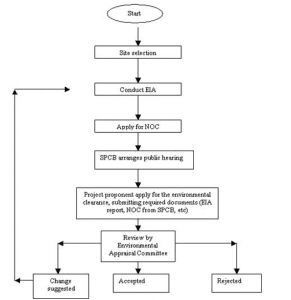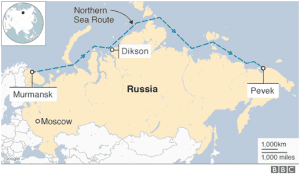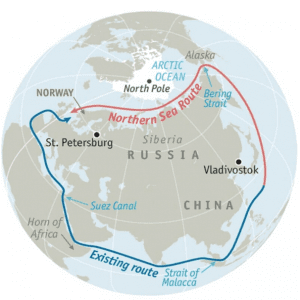1. LCA TEJAS FIRED ASTRA -AIR-TO-AIR MISSILE
TAG: GS 3: SCIENCE AND TECHNOLOGY
THE CONTEXT: Recently, indigenously developed light combat aircraft Tejas successfully test-fired an ASTRA Beyond Visual Range (BVR) air-to-air missile off the coast of Goa.
EXPLANATION:
- The test launch was monitored by the test director and scientists of Aeronautical Development Agency (ADA), DRDO, Hindustan Aeronautics Limited (HAL) along with officials from Centre for Military Airworthiness and Certification (CEMILAC).
- The missile release was successfully carried out from the aircraft at an altitude of about 20,000 ft. The aircraft was also monitored by a Chase Tejas twin-seater aircraft.
- The launch would significantly enhance the combat prowess of Tejas and reduce the dependency on imported weapons.
ASTRA
- ASTRA is a state-of-the-art BVR air-to-air missile to engage and destroy highly maneuvering supersonic aerial target.
- It is designed and developed by Defence Research and Development Laboratory (DRDL), Research Centre Imarat (RCI) and other laboratories of DRDO.

Light Combat Aircraft Tejas
- The HAL Tejas is an Indian single engine, delta wing, light multirole fighter designed by the Aeronautical Development Agency (ADA) in collaboration with Aircraft Research and Design Centre (ARDC) of Hindustan Aeronautics Limited (HAL) for the Indian Air Force and Indian Navy.
- It was developed from the Light Combat Aircraft (LCA) programme, which began in the 1980s to replace India’s ageing MiG-21 fighters but later became part of a general fleet modernisation programme.
- In 2003, the LCA was officially named “Tejas”. It is the smallest and lightest in its class of contemporary supersonic combat aircraft.
- The Tejas is the second fighter developed by HAL with the intention of attaining supersonic performance, after the HAL-24 Marut.
- The Tejas achieved initial operational clearance in 2011 and final operational clearance in 2019. The first Tejas squadron became operational in 2016.
- LCA has been the flag bearer of the IAF efforts towards indigenisation of its aircraft fleet and more importantly a flag bearer of India’s self-reliance in the aerospace sector.
2. CHANDRAYAAN-3
TAG: GS 3: SCIENCE AND TECHNOLOGY
THE CONTEXT: With the successful landing of the Lander Module of ISRO’s third lunar mission Chandrayaan-3, India has reached the Moon will now aims to carry out experiments.
EXPLANATION:
- The landing has happened at lunar dawn, and the six payloads on board the lander and rover started collecting data soon after to get as much science as possible in the single lunar day or 14 Earth days for which they will remain operable.
- Lander and rover of Chandrayaan -2 will build on the knowledge of earlier missions along with carrying out their own lunar exploration.
- The Chandrayaan-3 payloads will further the learnings of the two predecessor missions by studying lunar quakes, mineral compositions, and the electrons and ions near the surface of the Moon.
- The mission will attempt to study water-ice, the presence of which was detected by Chandrayaan-1.
Mission experiments
The lander has four experiments on board:
- The Radio Anatomy of Moon Bound Hypersensitive ionosphere and Atmosphere (RAMBHA) will study the electrons and ions near the surface of the moon and how they change over time.
- The Chandra’s Surface Thermo physical Experiment (ChaSTE) will study the thermal properties of the lunar surface near the polar region
- The Instrument for Lunar Seismic Activity (ILSA) will measure the lunar quakes near the landing site and study the composition of the Moon’s crust and mantle.
- The LASER Retroreflector Array (LRA) is a passive experiment sent by NASA that acts as a target for lasers for very accurate measurements for future missions.
There are two scientific experiments on the rover:
- The LASER Induced Breakdown Spectroscope (LIBS) will determine the chemical and mineral composition of the lunar surface.
- The Alpha Particle X-ray Spectrometer (APXS) will determine the composition of elements such as magnesium, aluminium, silicon, potassium, calcium, titanium, and iron in the lunar soil and rocks.
Earlier discoveries on the moon by Previous mission:
Discovery of water
- The southern polar region of the Moon is known to have deep craters that remain in permanent darkness, with a high likelihood of having water-ice.
- The most important discovery made by Chandrayaan-1 was the discovery of water and hydroxyl (OH) molecules in the Moon’s thin atmosphere (exosphere) as well as on the lunar surface.
- India’s Moon Impact Probe (MIP) a payload that was deliberately crashed on the lunar surface near the south pole helped study the concentration of water and hydroxyl molecules in the lunar atmosphere.
- Another payload called mini-SAR helped detect the subsurface deposits of water-ice in the permanently shadowed regions within the craters near the south pole.
- A third payload developed by NASA called Moon Mineralogy Mapper or M3 also helped detect these molecules on the surface of the Moon.
- Chandrayaan-2, which was designed to further study the water on the Moon, helped in separately identifying the water and the hydroxyl molecules, and mapping water features across the Moon for the first time
Buried lava tubes
- The terrain mapping camera and hyperspectral imager on board Chandrayaan-1 detected an underground lava tube, which, scientists believe, can provide a safe environment for human habitation in the future.
- It can protect against hazardous radiation, small meteoric impacts, extreme temperatures, and dust storms on the surface of the Moon.
Magma ocean thesis
- The Moon is believed to have been formed after an early piece of the Earth separated due to an impact. The energy generated by the impact is believed to have led to the melting of the Moon’s surface. This is called the magma ocean hypothesis.
- The M3 payload on board Chandrayaan-1 picked up a specific type of lighter-density crystals on the surface of the Moon, which could be found on the surface only if it were liquid once.
Solar flares
- The Solar X-Ray Monitor on the Chandrayaan-2 orbiter was able to observe many solar microflares outside the active region as well as the elemental abundance from the not-so-bright solar corona.
- These observations, which were so far only done for larger solar flares, can give scientists clues to the mystery of coronal heating why the Sun’s atmospheric layer (corona) is a million degrees hot even though the surface is just over 5,700 degrees Celsius.
Mapping of minerals
- CLASS X-ray Fluorescence experiment has mapped ~ 95% of the lunar surface in X-rays for the first time. X-ray spectrometers flown to the Moon in the past 50 years together have covered only less than 20% of the surface, according to ISRO.
- Both the Chandrayaan missions have mapped even regions from where sample return missions haven’t happened.
- These studies have shown that oxygen is abundant as oxides within the minerals on the Moon. This can be exploited as fuel for future missions, scientists believe.
3. NATIONAL CURRICULUM FRAMEWORK
TAG: GS 1: SOCIETY
THE CONTEXT: Recently, the National Curriculum Framework was released by the Union Education Minister.
EXPLANATION:
- NCF is developed by a steering committee headed by former Indian Space Research Organisation (ISRO) chairman K. Kasturirangan.
- It aims to overhaul school syllabus across the country in general and to integrate Indian culture and knowledge with the education system.
- It is one of the key components of the New Education Policy (NEP) 2020, that enables and energizes this transformation, informed by the aims, principles, and approach of NEP 2020.
Four Sections of NCF:
- NCF for School Education (NCF-SE)
- NCF for Early Childhood Care and Education (Foundational Stage)
- NCF for Teacher Education
- NCF for Adult Education
Objective:
- It aims to help in positively transforming the school education system of India as envisioned in NEP 2020, through corresponding positive changes in the curriculum including pedagogy.
- It aims to realize the highest quality education for all children, consistent with realizing an equitable, inclusive, and plural society as envisaged by the Constitution of India.
Highlights of the National Curriculum Framework:
Language Learning
- The policy emphasizes the importance of learning multiple languages, especially native Indian languages.
- Students in Classes 9 and 10 will need to learn three languages, of which at least two will be native to India.
- In Classes 11 and 12, students will learn two languages, including one of Indian origin.
- Currently, students in Classes 9 and 10 study two languages, and students in Class 11 and 12 study one language.
- The NCF expects students to achieve a “literary level” of linguistic capacity in at least one of these Indian languages.
Board Exams
- The policy aims to reduce the stress and anxiety associated with board exams to improve their performance and showcase their abilities.
- The NCF has stated that all students will be allowed to take Board exams on at least two occasions during any given school year, with only the best score being retained.
Mandatory Subjects
- The policy has increased the number of compulsory subjects for Classes 9 and 10 to seven and for Classes 11 and 12 to six.
- This is intended to provide a broader and more balanced education to students.
Optional Subjects
- Optional subjects have been grouped in three parts in the NCF.
- The first optional group includes art education, emphasising on both visual and performing arts, with equal emphasis on making, thinking about, and appreciating artwork.
- It also includes physical education and vocational education.
- The second group includes Social Science, the Humanities, and interdisciplinary areas.
- The third group includes Science, Mathematics, and computational thinking.
- Students can choose subjects from any of these groups according to their interests and aspirations.
Flexible Curriculum
- The policy has made the curriculum more flexible and interdisciplinary by removing the rigid boundaries between academic and vocational subjects, as well as between different subject areas.
- Students can mix and match subjects from different groups and create their personalized learning paths.
Environmental Education
- The curriculum for environmental education covers various topics related to the natural and human-made environment, such as ecosystems, biodiversity, climate change, pollution, conservation, and sustainable development.
- Students are encouraged to develop awareness, appreciation, and responsibility for the environment through experiential learning, projects, and field trips.
- Environmental education is integrated across all subjects in the Primary and Middle Stages and offered as a separate elective subject in the Secondary Stage.
Content Distribution
- For Social Science curriculum for Classes 6 to 8 , the NCF states that 20% content would be from the local level for the Social Science curriculum, 30% content would be from the regional level, 30% would be from the national level, and 20% content would be global.
- The ‘Secondary Stage’ has been significantly redesigned to offer more flexibility and choice for students.
- There is no hard separation between academic and vocational subjects, or between Science, Social Science, Art, and Physical Education. Students can choose interesting combinations of subjects for receiving their School Leaving Certificates.
4. ECO-SENSITIVE ASPECTS IN ENVIRONMENTAL CLEARANCE
TAG: GS 3: ENVIRONMENT
THE CONTEXT: The National Green Tribunal (NGT) Southern Bench withholds green nod granted for fishing harbours near to the Kaliveli bird sanctuary.
Why is the environmental clearance kept in abeyance?
- The fisheries department had proposed to build two fishing harbours.
- One at Alamparaikuppam in Chengalpet and other at Azhagankuppam in Villupuram both in Tamil Nadu.
- It proposed to build with a capacity of 12,000 tonnes per annum each.
- Two training walls would be built by cutting open a narrow strip of beach area to create a navigation channel for fishing vessels to come into the estuary.
- The petitioner established the presence of mangroves, turtle nesting, seagrass beds and sand dunes in the proposed project area, which was also supported by the report of the Principal Chief Conservator of Forests.
- The NGT bench said that the project cannot be permitted in the absence of a comprehensive EIA.
- NGT pointed out that the Department of Fisheries hurried to apply for environmental clearance (EC) to construct two fishing harbours in Kaluveli wetlands.
- It applied for EC without revision of Coastal Zone Management Plan (CZMP) and without comprehensive environmental impact assessment (EIA) report.
- Therefore, in the absence of comprehensive EIA studies done scientifically, the environmental clearance granted has to be kept in abeyance.
What are the further orders of the tribunal?
- It directed the State Coastal Zone Management Authority not to proceed with the public hearing based on an incomplete draft CZMP.
- It cannot permit the harbour project to proceed further till the errors in the CZMP are rectified and the comprehensive shoreline protection management plan is approved.
- It gave liberty to the Department of Fisheries to submit a fresh application if there is a change in the scope of the project.
- In case the project involves erosion control measures (groynes or training walls), then the proposal should be considered only after the Shoreline Management is finalized by the National Centre for Coastal Research (NCCR).
Environmental Impact Assessment (EIA):
- EIA can be defined as the study to predict the effect of a proposed activity/project on the environment.
- A decision-making tool, EIA compares various alternatives for a project and seeks to identify the one which represents the best combination of economic and environmental costs and benefits.
- EIA systematically examines both beneficial and adverse consequences of the project and ensures that these effects are considered during project design.
- It has many benefits, such as protection of environment, optimum utilisation of resources and saving of time and cost of the project.
Decentralisation of Project Clearances:
- It classified the developmental projects in two categories:
- Category A (national level appraisal): projects are appraised by Impact Assessment Agency (IAA) and the Expert Appraisal Committee (EAC).
- Category B (state level appraisal): State Level Environment Impact Assessment Authority (SEIAA) and State Level Expert Appraisal Committee (SEAC) provide clearance to the Category B projects.
The overview of the EIA process is represented below through a diagram:

National Green Tribunal:
- The National Green Tribunal is a statutory body, established under the National Green Tribunal Act 2010.
- The Tribunal comprises the Chairperson, the Judicial Members, and Expert Members.
- They shall hold office for a term of 5 years and are not eligible for reappointment.
- It is established for effective and expeditious disposal of cases relating to environmental protection and conservation of forests and other natural resources.
- It has appellate jurisdiction to hear appeals as a Court.
- The Tribunal is not bound by the procedure laid down under the Code of Civil Procedure, 1908, but shall be guided by principles of natural justice.
- New Delhi is the Principal Place of Sitting of the Tribunal and Bhopal, Pune, Kolkata, and Chennai shall be the other four places of sitting of the Tribunal.
5. INDIA AND THE NORTHERN SEA ROUTE
TAG: GS 2: INTERNATIONAL RELATIONS
THE CONTEXT: Murmansk also known as the capital of the Arctic region and the beginning point of the Northern Sea Route (NSR), is witnessing the rising trend of Indian involvement in cargo traffic. India has been showing greater interest regarding the NSR for a variety of reasons.

Why is the Arctic region significant to India?
- The Arctic region is located above the Arctic Circle and includes the Arctic Ocean with the North Pole at its centre.
- India’s economic security, water security, and sustainability may be impacted by the Arctic region’s vulnerability to unprecedented climatic change.
- The area also constitutes the largest hydrocarbon potential area that has not yet been explored on earth.
- As per experts, the region may hold over 40 percent of the current global reserves of oil and gas. There may also be significant reserves of coal, zinc, and silver.
How is India’s engagement with the Arctic?
- India’s engagement with the Arctic can be traced back to the signing of the Svalbard Treaty in February 1920 in Paris.
- India is undertaking several scientific studies and research in the Arctic region. This encompasses atmospheric, biological, marine, hydrological and glaciological studies.
- Apart from setting up a research station, Himadri, at Svalbard, in 2008, the country launched its inaugural multi-sensor moored observatory and northernmost atmospheric laboratory in 2014 and 2016 respectively.
- Till last year, thirteen expeditions to the Arctic were successfully conducted.
- In May 2013, India became an observer-state of the Arctic Council along with five others including China.
What is NSR?
- The Northern Sea Route (NSR), which crosses four seas of the Arctic Ocean, is the quickest shipping route for moving goods between Europe and nations in the Asia-Pacific area.
- The route covering 5,600 km and begins at the boundary between the Barents and the Kara seas (Kara Strait) and ends in the Bering Strait (Provideniya Bay).

- As per one research paper, distance savings along the NSR can be as high as 50% compared to the currently used shipping lanes via Suez or Panama.
- The 2021 blockage of the Suez Canal, which forms part of the widely-used maritime route involving Europe and Asia, has led to greater attention on the NSR.
What are the driving factors for India to participate in the NSR development?
- Since India has been importing more crude oil and coal from Russia lately, NSR offers a dependable and secure transportation route.
- The NSR, as a transit route, assumes importance, given India’s geographical position and the major share of its trade associated with sea transportation.
- The Chennai-Vladivostok Maritime Corridor (CVMC) project is being examined as one linking with another organise international container transit through the NSR.
- The 10,500 km long CVMC, passing through the Sea of Japan, the South China Sea and Malacca Strait, will bring down transport time to 12 days.
- This is almost a third of what is taken under the existing St. Petersburg-Mumbai route of 16,000 km.
- The possibility for China and Russia to influence the NSR jointly is being discussed by experts.


